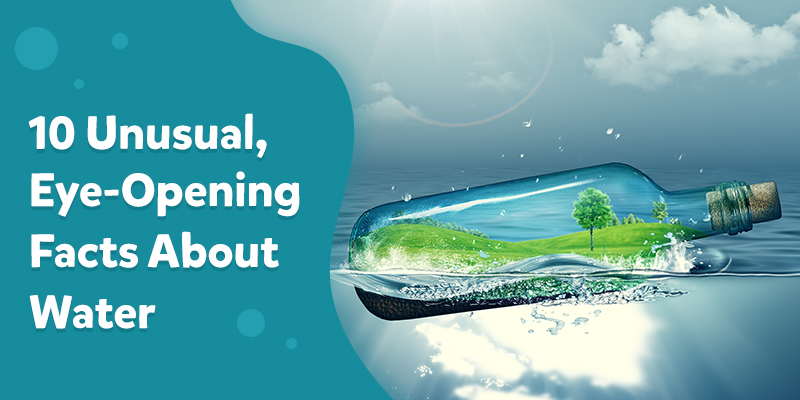
What comes to your mind when we say water? An extremely vital part of all our lives although it’s completely transparent, tasteless, and odourless, right? Let’s break it down for you and start with the basics. Water is the main constituent of the Earth’s hydrosphere and the fluids of all known living organisms. It is necessary for all known forms of life, even though it provides living beings with no calories or organic nutrients.
We might feel or even think that our rivers have an endless supply of water, but it can be quite deceptive. Do you know why? Because water is a finite resource and we only have what we have. And the numerous ways in which humankind has been wasting water over the years, this finite resource is already on the brink of becoming scarce. So with that in mind, there are several other facts about water – some wondrous, some disconcerting, all eye-opening – that we should read about.
Water is in all living things, whether they live at the bottom of the ocean or the driest deserts around the world. Water made life possible on Earth. Because of this, astrobiologists (scientists who search for life on other planets) think our best bet for finding life on other planets in the solar system is to search for water.
As high as 96.5 percent of water on Earth is in our oceans, covering 71 percent of the surface of our planet. And at any given point, about 0.001 percent is floating above us in the atmosphere. Did you know that if all of that water fell as rain at once, the whole planet would get about 1 inch of rain?
68.7 percent of the freshwater on Earth is trapped in glaciers. Almost 30 percent of freshwater is in the ground. 1.7 percent of the world’s water is frozen and therefore unusable.
The standard norm for domestic water usage in India is 135 litres per capita per day (lpcd), as prescribed by the Central Public Health and Environmental Engineering Organisation. However, several families use double the amount quite often.
One-third of what the world spends on bottled water in one year could pay for projects providing water to everyone in need. Unsafe, unhygienic water kills 200 children across the globe every hour.
In a gallon (approximately 4.5 litres) of average ocean water, there is about 1 cup of salt. But it does vary. For instance, the Atlantic Ocean is saltier than the Pacific Ocean. The Dead Sea has a reputation as the saltiest sea in the world, with a salinity of around 34 percent, about 10 times as salty as the Atlantic and Pacific Oceans.
There can be a lot going on in a single drop of ocean water. It will most likely have millions (yes, millions!) of bacteria and viruses thriving in it. And it could also have fish eggs, baby crabs, plankton, or even small worms.
There is more fresh water in the atmosphere than in all the rivers on our planet combined. Each day the sun evaporates a million litres of water approximately. A single tree gives 70 gallons (264.9 litres approx) of water per day in evaporation.
70 percent of the human brain is water. Our bodies are also mostly water. A newborn baby is 78 percent water. Adults are 55-60 percent water.
The rocky material that formed the Earth contained some water. But that probably doesn’t account for all the water that we have or see today. Comets are mostly water ice and it’s quite possible that comets made regular water deliveries to Earth, scientists have suggested. It would have definitely taken a lot of comets to fill up our oceans, but comets could have made a huge contribution.
Did you know all of these facts about water? Do you have any more interesting ones you wish to share? Tell us in the comments below.
Enjoyed reading this? Then visit The Learning Tree blog to read more cool stuff like this:
Writing has always been Shreesha’s passion, be it for imparting knowledge or expressing opinions. In her former role as a journalist, she contributed to enriching society with knowledge. Now, at BYJU’S, she has moved on to something more exciting – creating tailor-made content for students. When she is not writing, you would find her looking for new ways to engage her child.